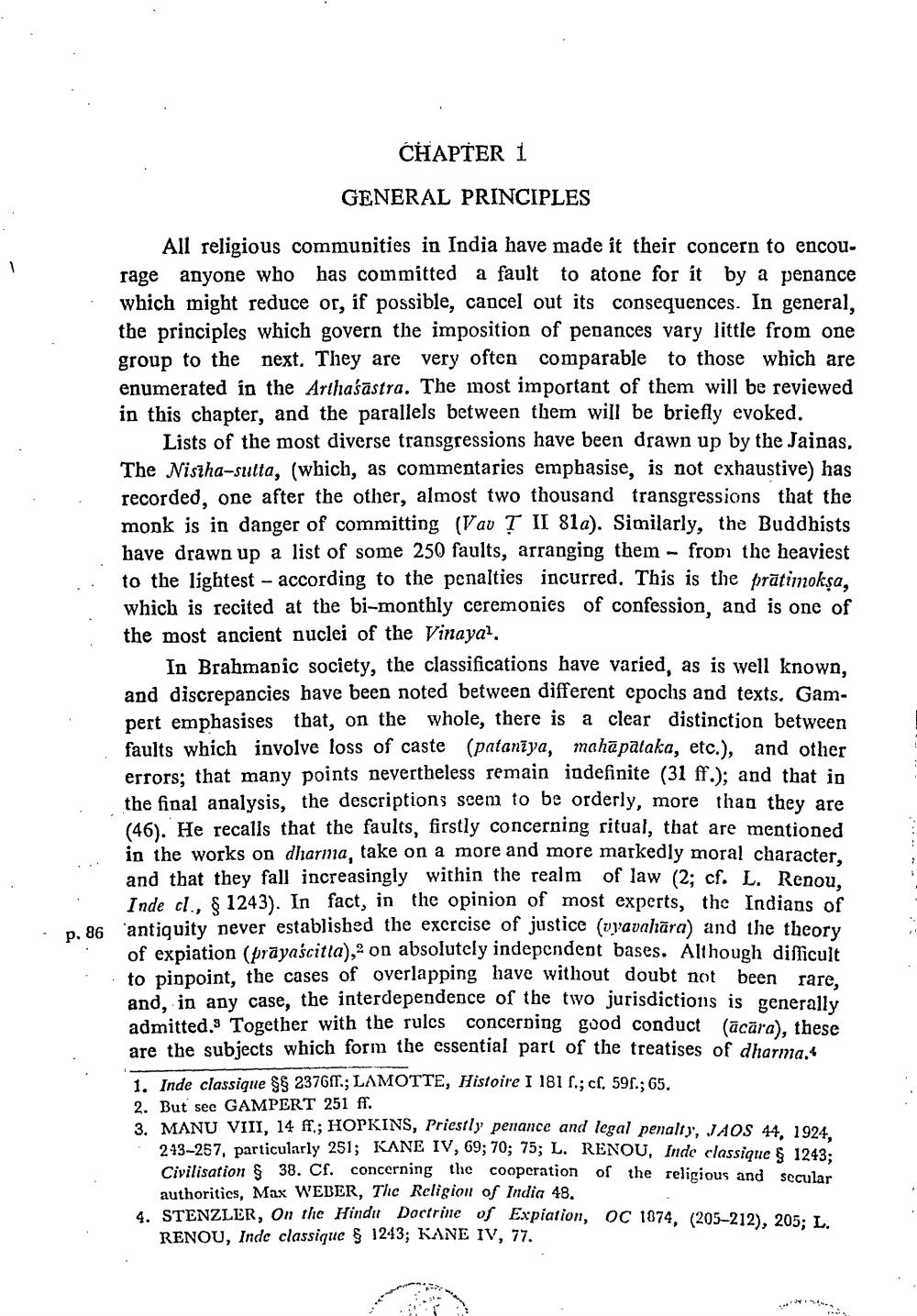________________
CHAPTER 1 GENERAL PRINCIPLES
All religious communities in India have made it their concern to encourage anyone who has committed a fault to atone for it by a penance which might reduce or, if possible, cancel out its consequences. In general, the principles which govern the imposition of penances vary little from one group to the next. They are very often comparable to those which are enumerated in the Arthaśāstra. The most important of them will be reviewed in this chapter, and the parallels between them will be briefly evoked.
Lists of the most diverse transgressions have been drawn up by the Jainas, The Nisīha-sutta, (which, as commentaries emphasise, is not exhaustive) has recorded, one after the other, almost two thousand transgressions that the monk is in danger of committing (Vad Ţ II 81a). Similarly, the Buddhists have drawn up a list of some 250 faults, arranging them - from the heaviest to the lightest - according to the penalties incurred. This is the prātimoksa. which is recited at the bi-monthly ceremonies of confession, and is one of the most ancient nuclei of the Vinaya.
In Brahmapic society, the classifications have varied, as is well known. and discrepancies have been noted between different cpochs and texts. Gampert emphasises that, on the whole, there is a clear distinction between faults which involve loss of caste (patanīya, mahāpataka, etc.), and other errors; that many points nevertheless remain indefinite (31 ff.); and that in the final analysis, the descriptions seem to be orderly, more than they are (46). He recalls that the faults, firstly concerning ritual, that are mentioned in the works on dharma, take on a more and more markedly moral character. and that they fall increasingly within the realm of law (2; cf. L. Renou. Inde cl.. 8 1243). In fact, in the opinion of most experts, the Indians of antiquity never established the excrcise of justice (vyavahāra) and the theory of expiation (brāyaścitta), on absolutely independent bases. Although difficult to pinpoint, the cases of overlapping have without doubt not been tar
any case, the interdependence of the two jurisdictions is generally admitted 9 Together with the rules concerning good conduct (ācāral these are the subjects which form the essential part of the treatises of doc.
p. 86
1. Inde classique &$ 2376ff.; LAMOTTE, Histoire I 181 f.; cf. 591.; 65. 2. But see GAMPERT 251 ff. 3. MANU VIII, 14 ff.; HOPKINS, Priestly penance and legal penalty', JAOS 44. 1924.
243-257. particularly 251; KANE IV, 69; 70; 75; L. RENOU, Inde classique & 1243: Civilisation & 38. Cf. concerning the cooperation of the religious and secular
authorities, Max WEBER, The Religion of India 48. 4. STENZLER, On the Hindu Doctrine of Expiation, OC 1874, (205-212), 205: L.
RENOU, Inde classique & 1243; KANE IV, 77.




